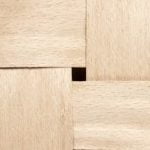Woodwork preparation is a crucial step in any woodworking project, and one often overlooked aspect is the cleaning of stained woodwork before sanding. In this article, we will explore the reasons why it is essential to clean stained woodwork before sanding and the potential risks involved if this step is neglected. Understanding the impact of proper preparation on the overall finish and longevity of the project can lead to more successful woodworking endeavors.
Stained woodwork presents a unique challenge when it comes to preparing for sanding. The presence of stain, dirt, grime, and other contaminants can interfere with the sanding process and result in an uneven finish. By understanding why cleaning stained woodwork before sanding is crucial, woodworkers can ensure that their projects achieve professional-quality results.
Neglecting to clean stained woodwork before sanding can pose several risks and drawbacks that can compromise the outcome of a woodworking project. From clogging up sandpaper to causing smudges and streaks in the final finish, failing to properly clean stained woodwork can lead to unsightly and inconsistent results. This article will delve into these potential risks in more detail, providing insight into why proper cleaning is an integral part of woodwork preparation.
Understanding Stained Woodwork
Stained woodwork can add a beautiful and elegant touch to any home, but when it comes time for maintenance or refinishing, cleaning the woodwork before sanding is essential. This step is crucial in ensuring that the sanding process is effective and that the new finish will adhere properly to the wood. But why is it so important to clean stained woodwork before sanding?
The reason behind cleaning stained woodwork before sanding is to remove any dirt, grime, or grease that may have built up on the surface over time. Sanding over these contaminants can push them further into the wood grain, making it difficult to achieve a smooth and even finish. Additionally, if the surface is not properly cleaned before sanding, the new finish may not adhere well, leading to potential peeling or flaking in the future.
In addition to preparing the wood surface for proper adhesion of a new finish, cleaning stained woodwork before sanding also helps reveal any hidden damage or imperfections that may need to be addressed before moving forward with the refinishing process. It allows for a thorough assessment of the condition of the wood and ensures that any necessary repairs are made before applying a new finish.
| Reasons for Cleaning Stained Woodwork Before Sanding | Benefits |
|---|---|
| Remove dirt, grime, and grease buildup | Ensures smooth and even finish |
| Reveals hidden damage or imperfections | Allows for necessary repairs before refinishing |
The Potential Risks of Not Cleaning Stained Woodwork Before Sanding
When it comes to working with stained woodwork, proper preparation is crucial for achieving a successful and long-lasting finish. One of the key steps in this process is cleaning the woodwork before sanding. But why is this step so important? Let’s take a closer look at the potential risks of not cleaning stained woodwork before sanding.
1. Decreased Sanding Effectiveness: If stained woodwork is not properly cleaned before sanding, the presence of dirt, grime, and other contaminants can diminish the effectiveness of the sanding process. This can result in an uneven finish and may even cause the stain to penetrate deeper into the wood, making it more difficult to remove.
2. Risk of Splotchy or Uneven Stain Removal: Failing to clean stained woodwork before sanding can lead to splotchy or uneven results when attempting to remove the existing stain. The presence of dirt and residue on the surface can prevent the remover from working effectively, leaving behind patches of old stain that are difficult to address.
3. Adhesion Issues with New Finish: Another risk of skipping the cleaning step is poor adhesion of any new finish applied to the woodwork. Contaminants left on the surface can prevent stains, paints, or sealants from properly adhering, which can lead to premature wear and peeling over time.
By understanding these potential risks, it becomes clear that taking the time to clean stained woodwork before sanding is a critical step in achieving professional-quality results for any woodworking project.
Step-by-Step Guide to Cleaning Stained Woodwork Before Sanding
Gather Your Materials
Before you start cleaning the stained woodwork, it’s important to gather all the necessary materials and tools. You’ll need a bucket of warm water, mild dish soap, a sponge or soft cloth, and some clean rags for drying.
Test for Lead
If your woodwork was painted or stained before 1978, it’s crucial to test for lead before cleaning or sanding. Lead is toxic and can be harmful if ingested or inhaled, so use a lead testing kit to ensure the safety of your project.
Remove Surface Dust and Debris
Using a dry cloth or brush, remove any surface dust and debris from the woodwork. This will prevent these particles from getting trapped in the cleaning solution and scratching the wood during the cleaning process.
Mix Cleaning Solution
Fill your bucket with warm water and add a small amount of mild dish soap. Mix the solution until suds begin to form.
Clean the Woodwork
Dip your sponge or cloth into the cleaning solution and gently scrub the stained woodwork. Make sure to work in small sections at a time, rinsing your sponge or cloth frequently in the soapy water.
By following this step-by-step guide to cleaning stained woodwork before sanding, you can ensure that your project will have a smooth and professional finish without any unwanted blemishes or imperfections.
Recommended Products and Tools for Cleaning Stained Woodwork
When it comes to cleaning stained woodwork before sanding, using the right products and tools is essential for achieving a successful result. Here are some recommended items to consider for this important step in your woodworking project:
- Wood cleaner or wood-specific soap: Using a specialized wood cleaner or soap designed for use on stained woodwork can help remove built-up grime, dirt, and grease without damaging the finish.
- Soft-bristle brush or sponge: To avoid scratching or marring the stained surface, opt for a soft-bristle brush or sponge when applying the cleaner. This will ensure gentle yet effective removal of any surface contaminants.
- Clean, lint-free cloths: Having clean, lint-free cloths on hand is essential for wiping down the woodwork after applying the cleaner. This will help remove any remaining residue and leave the surface ready for sanding.
- Protective gloves and eyewear: Depending on the type of cleaner being used, protective gloves and eyewear may be necessary to avoid skin irritation or eye contact with potentially harmful chemicals.
Using these recommended products and tools will not only ensure that your stained woodwork is properly cleaned before sanding, but also minimize the risk of damage to the surface. By taking care to use suitable cleaners and gentle application methods, you can prepare your woodwork effectively while maintaining its integrity.
In addition to these basic supplies, there are other specialty products available that may be useful depending on the specific condition of the stained woodwork. Be sure to read product labels carefully and follow manufacturer instructions for best results. Remember that proper cleaning before sanding sets the stage for a successful woodworking project by promoting adhesion of subsequent finishes and preserving the overall longevity of your work.
Tips and Tricks for Effective Stain Removal and Cleaning
Staining can be tough to remove, and cleaning stained woodwork before sanding is crucial to ensuring a smooth and professional finish. Here are some tips and tricks for effective stain removal and cleaning that will help you prepare your woodwork properly for sanding.
Use the Right Cleaning Products
When it comes to cleaning stained woodwork, choosing the right products is essential. Look for a high-quality wood cleaner specifically designed for removing stains. Alternatively, you can also use a mixture of water and mild dish soap or white vinegar. Avoid using harsh chemicals or abrasive cleaners that can damage the wood surface.
Apply Gentle Pressure
Once you have the appropriate cleaning solution, apply it to the stained areas with a soft cloth or sponge. Gently rub the stained woodwork in a circular motion, being careful not to scrub too vigorously which could cause further damage to the wood fibers.
Rinse Thoroughly and Dry Completely
After cleaning the stained woodwork, rinse off any remaining cleaning solution with clean water. Make sure to dry the wood thoroughly using a clean, dry cloth. It’s important to remove all excess moisture from the surface before proceeding with sanding as any trapped moisture can affect the quality of your final finish.
By following these tips and tricks for effective stain removal and cleaning, you can ensure that your woodwork is properly prepared for sanding, ultimately leading to a more professional and long-lasting finish.
Best Practices for Sanding After Properly Cleaning Stained Woodwork
Once stained woodwork has been cleaned, the next crucial step in the preparation process is to ensure that it is sanded properly. But why clean stained woodwork before sanding? The answer lies in the fact that sanding over stained woodwork without cleaning it first can lead to several issues.
Sanding over dirty or stained wood can drive the dirt and stain deeper into the grain of the wood, which can affect the overall finish and quality of your project. It can also cause uneven sanding and potentially damage your sandpaper, leading to a less-than-desirable end result.
To avoid these potential risks, it is essential to follow best practices for sanding after properly cleaning stained woodwork. In doing so, you can ensure a smooth and even finish while preventing any damage to your sanding tools.
The first step in sanding after cleaning stained woodwork is to choose the correct grit of sandpaper for the job. For initial sanding after cleaning, it is best to start with a medium-grit sandpaper between 100-150 grit to remove any remaining stain or dirt from the surface.
Then, gradually move on to finer grits such as 220-400 for a smoother finish. This gradual process will help you achieve a polished result without damaging the wood surface during sanding.
| Sanding Steps | Recommended Grit |
|---|---|
| Initial Sanding | 100-150 |
| Finishing Sanding | 220-400 |
The Impact of Cleaning Stained Woodwork on the Overall Finish and Longevity of the Project
Cleaning stained woodwork before sanding has a significant impact on the overall finish and longevity of the project. When you clean stained woodwork before sanding, you remove any dirt, grime, or residue that may have accumulated over time. This ensures that the wood surface is smooth and ready for sanding, allowing for a more even and consistent result.
Moreover, cleaning stained woodwork before sanding helps to prevent any contaminants from being spread around during the sanding process. Sanding over dirty surfaces can cause the dirt and grime to be ground into the wood, leading to a less-than-desirable finish. By thoroughly cleaning the woodwork beforehand, you create a clean surface for the sandpaper to work on, resulting in a smoother and more professional-looking finish.
Additionally, by cleaning stained woodwork before sanding, you also reduce the risk of damaging your sandpaper and woodworking tools. Dirt and debris on the surface can quickly dull your sandpaper or cause scratches on your tools, requiring frequent replacements. This adds unnecessary costs to your project and may also lead to subpar results. Therefore, taking the time to properly clean stained woodwork before sanding not only improves the overall finish but also extends the lifespan of your equipment.
Conclusion
In conclusion, the process of cleaning stained woodwork before sanding is a crucial step in the preparation process that should not be overlooked. By understanding the importance of proper woodwork preparation, including the necessity of cleaning stained surfaces, individuals can significantly improve the outcome of their projects and ensure the longevity of their work.
There are several potential risks associated with not cleaning stained woodwork before sanding, such as uneven staining, adhesion issues with paint or sealants, and an overall unsatisfactory finish. These risks can easily be mitigated by following a step-by-step guide to cleaning stained woodwork before sanding, using recommended products and tools to effectively remove stains and debris.
By implementing best practices for sanding after properly cleaning stained woodwork, individuals can maximize the impact of their efforts on the overall finish and longevity of their project. The key takeaways and benefits of this process include a smoother and more even surface for staining or painting, improved adhesion of finishing products, and a professional-quality result that will stand the test of time.
Therefore, it is clear that taking the time to clean stained woodwork before sanding is a worthwhile investment in achieving a successful woodworking project.
Frequently Asked Questions
Should You Clean Wood Before Sanding It?
It is generally recommended to clean wood before sanding it. This helps to remove any dirt, grime, or other contaminants that could get in the way of the sanding process. Cleaning the wood beforehand can result in a smoother and more even finish after sanding.
What Happens if You Sand After Staining Wood?
Sanding after staining wood can cause the stain to become lighter or uneven in certain areas. This is because sanding removes a layer of the stained wood, leading to an inconsistent look. To avoid this issue, it’s best to finish all sanding before applying any stain to the wood.
Why Do You Need to Degrease Before Sanding?
Degreasing before sanding is important because it helps to remove any oils, waxes, or other substances that could hinder the effectiveness of the sanding process. Sanding over greasy or oily surfaces can lead to a less-than-perfect finish, so degreasing ensures that the wood is clean and ready for sanding.

Hi everyone! I’m a woodworker and blogger, and this is my woodworking blog. In my blog, I share tips and tricks for woodworkers of all skill levels, as well as project ideas that you can try yourself.





